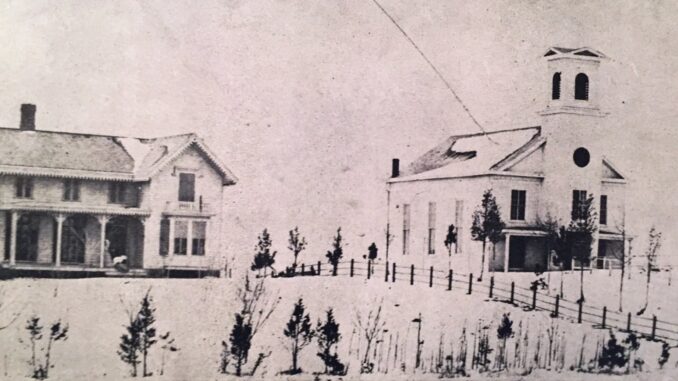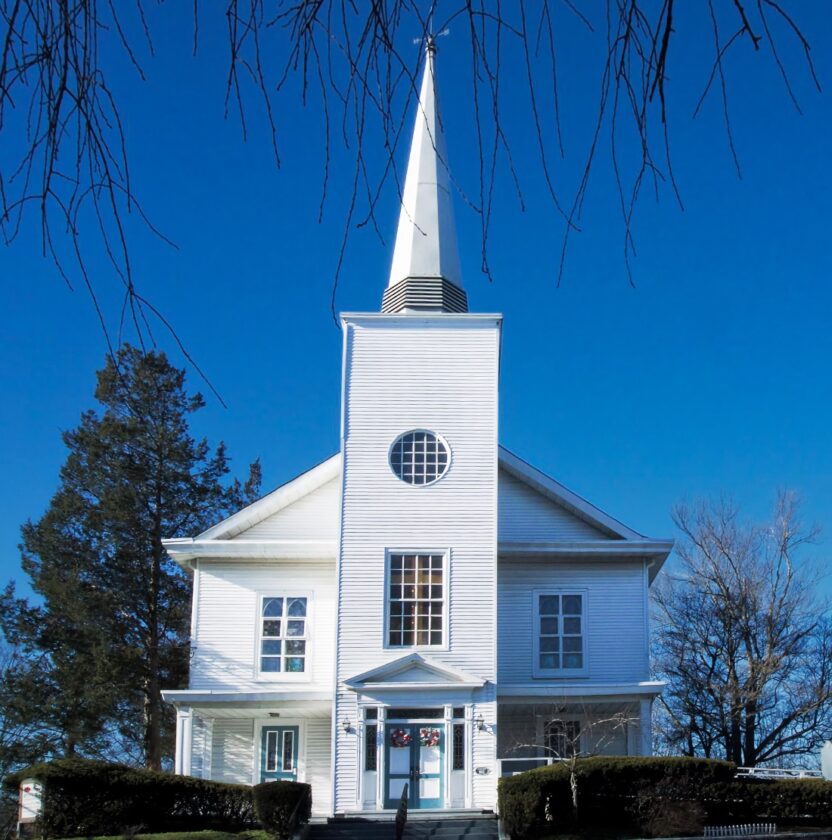
CLOSTER, NJ — The United States was embroiled in the Civil War, but West Street in Closter presented a tranquil scene in this photograph taken in the winter of 1863.
On the right side of the photo is the Dutch Reformed Church, which stands in the same location today. At the time, the house on the left was occupied by church leader Reverend Hammond. Later the Eckerson family would live there. The farmhouse, constructed in the Gothic Revival style with sawtooth trim on its eaves and above the porch, was torn down in the 20th century.
St. Mary’s School now occupies this site. The fence running between the house and church would be High Street today.
The church, at 328 West St., was built only one year before this photo was taken. Constructed from 1861–1862, the church had a congregation numbering just 15 people at the time—names familiar in the annals of Closter history, like Demarest, Blauvelt, Ruckman, and Durie.
It was the first church built within present-day Closter, which at the time was just a neighborhood within Harrington Township. Until that time the nearest churches were in Dumont and Tappan—not very far by modern standards, but think about making the trip in January with a horse and wagon.

The architect of the church was John H. Stephens, a man who would have been known to everyone in the tight-knit village at the time. The native New Yorker had settled in Closter and opened up a general store in 1857. He was also the postmaster and the first railroad station agent in town.
It was an era when great change was on the horizon for this region. On May 26, 1859, the first train on the Northern Railroad line came down from Piermont, N.Y., southbound toward Jersey City. Englewood and Closter were the Northern Valley’s first local stops on the line. With that, the sparsely populated farming village of Closter was linked with the outside world. New houses went up, more people came to town, and many local institutions saw their beginnings in the years that followed.
The snowy photo on this page speaks to the hardships encountered in building the church. The congregants worked through the bitterly cold winter of 1861-1862 constructing framework, only to have a windstorm blow it down in the spring. The volunteers squared their shoulders and began anew, working in their spare time to build the church that is still standing 160 years later.
In her book “Images of America: Closter and Alpine,” author Patricia Garbe-Morillo writes, “On the eve of the construction of this church in 1861, Abraham Lincoln was drafting 10,500 New Jersey boys into service for the Civil War. The Harrington Rifles, a volunteer company drill team organized in 1861, practiced in the church during the war. Two town members of the company, Garret I. Demarest and David Bogert, were Civil War casualties.”
